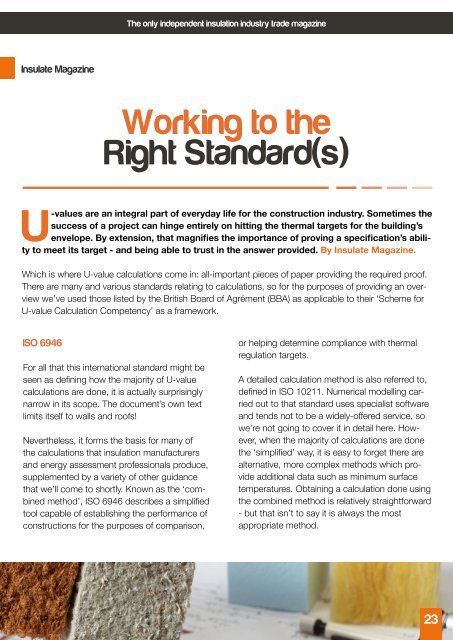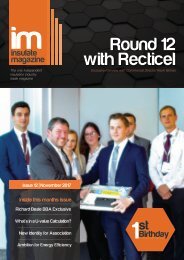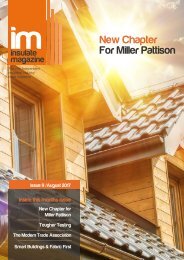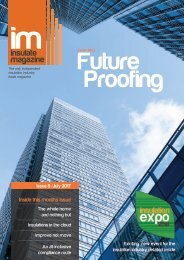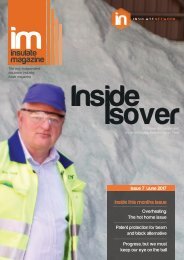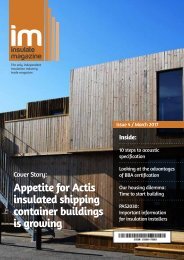Insulate Magazine Issue 11
Create successful ePaper yourself
Turn your PDF publications into a flip-book with our unique Google optimized e-Paper software.
The only independent insulation industry trade magazine<br />
<strong>Insulate</strong> <strong>Magazine</strong><br />
Working to the<br />
Right Standard(s)<br />
U-values are an integral part of everyday life for the construction industry. Sometimes the<br />
success of a project can hinge entirely on hitting the thermal targets for the building’s<br />
envelope. By extension, that magnifies the importance of proving a specification’s ability<br />
to meet its target - and being able to trust in the answer provided. By <strong>Insulate</strong> <strong>Magazine</strong>.<br />
Which is where U-value calculations come in: all-important pieces of paper providing the required proof.<br />
There are many and various standards relating to calculations, so for the purposes of providing an overview<br />
we’ve used those listed by the British Board of Agrément (BBA) as applicable to their ‘Scheme for<br />
U-value Calculation Competency’ as a framework.<br />
ISO 6946<br />
For all that this international standard might be<br />
seen as defining how the majority of U-value<br />
calculations are done, it is actually surprisingly<br />
narrow in its scope. The document’s own text<br />
limits itself to walls and roofs!<br />
Nevertheless, it forms the basis for many of<br />
the calculations that insulation manufacturers<br />
and energy assessment professionals produce,<br />
supplemented by a variety of other guidance<br />
that we’ll come to shortly. Known as the ‘combined<br />
method’, ISO 6946 describes a simplified<br />
tool capable of establishing the performance of<br />
constructions for the purposes of comparison,<br />
or helping determine compliance with thermal<br />
regulation targets.<br />
A detailed calculation method is also referred to,<br />
defined in ISO 102<strong>11</strong>. Numerical modelling carried<br />
out to that standard uses specialist software<br />
and tends not to be a widely-offered service, so<br />
we’re not going to cover it in detail here. However,<br />
when the majority of calculations are done<br />
the ‘simplified’ way, it is easy to forget there are<br />
alternative, more complex methods which provide<br />
additional data such as minimum surface<br />
temperatures. Obtaining a calculation done using<br />
the combined method is relatively straightforward<br />
- but that isn’t to say it is always the most<br />
appropriate method.<br />
23<br />
www.insulatenetwork.com 23


